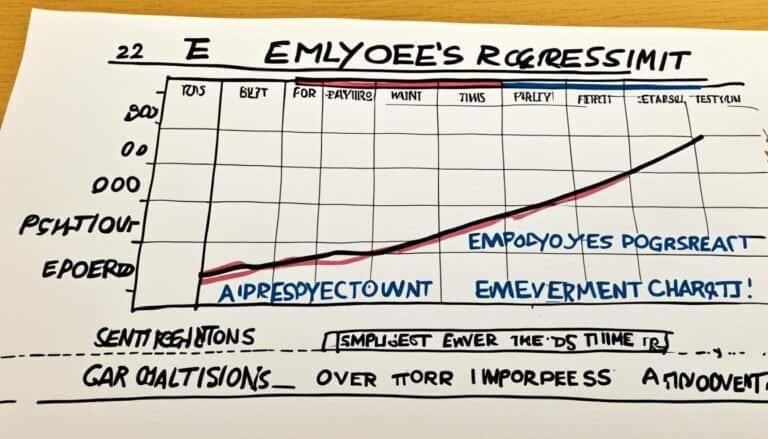What Is Conflict Management?
When it comes to maneuvering workplace dynamics and fostering productive relationships, understanding what conflict management entails is key.
Imagine a scenario where differing viewpoints clash, and tensions rise – this is where conflict management steps in.
By unraveling the intricacies of this concept, you will uncover the tools necessary to address disputes effectively and cultivate a harmonious environment.
So, how can you proactively approach conflicts and steer them towards positive outcomes?
Key Takeaways
- Conflict management resolves disputes and enhances relationships.
- Effective communication and mediation skills are essential.
- Different conflict types require specific resolution approaches.
- Conflict management boosts productivity and workplace harmony.
Definition of Conflict Management
When handling conflicts, understanding the definition of conflict management is important for finding effective solutions. Conflict resolution involves the process of addressing disputes or disagreements between individuals or groups. It aims to find a peaceful and mutually satisfactory solution to the issue at hand. Negotiation techniques play a critical role in conflict management, as they help parties involved in the conflict to communicate, listen, and work towards a resolution.
Effective conflict management requires a strategic approach that considers the interests and needs of all parties involved. By utilizing negotiation techniques such as active listening, problem-solving, and compromise, conflicts can be resolved in a constructive manner. Conflict resolution isn't about winning or losing but about finding a middle ground where all parties feel heard and valued.
Importance of Conflict Management
Understanding the significance of conflict management is important in fostering productive relationships and maintaining a harmonious environment. Conflict management holds immense significance as it allows individuals to address disagreements in a constructive manner, leading to enhanced communication and understanding. By actively engaging in conflict management, individuals can prevent small issues from escalating into larger disputes that may harm relationships or team dynamics.
One of the key benefits of conflict management is that it promotes a culture of openness and transparency. When conflicts are addressed promptly and effectively, it creates an environment where people feel comfortable expressing their opinions and concerns without fear of reprisal. Additionally, conflict management helps in resolving misunderstandings and clarifying expectations, which ultimately leads to increased trust among individuals.
Furthermore, conflict management enables parties to find mutually acceptable solutions that take into account the interests and needs of all involved. This collaborative approach not only resolves current conflicts but also strengthens relationships and builds a foundation for future cooperation. Overall, recognizing the importance and benefits of conflict management is significant for fostering healthy interactions and achieving positive outcomes.
Key Elements of Conflict Management
When managing conflicts, it's essential to understand Conflict Resolution Strategies, Communication Techniques, and Mediation Skills.
These key elements play a significant role in effectively addressing and resolving disagreements in various settings.
Conflict Resolution Strategies
To effectively manage conflicts, it's essential to implement proactive strategies that promote open communication and mutual understanding among individuals. Conflict resolution strategies encompass a variety of techniques aimed at peacefully addressing disagreements.
Conflict negotiation techniques involve discussions to find a mutually acceptable solution, while conflict de-escalation methods focus on calming tensions and reducing the intensity of the conflict. Additionally, conflict mediation approaches involve a neutral third party facilitating communication and guiding the parties towards resolution.
Conflict resolution tactics emphasize problem-solving and compromise to reach a mutually beneficial outcome. By utilizing these strategies, you can navigate conflicts constructively, fostering positive relationships and maintaining a harmonious environment.
Communication Techniques
Managing conflicts successfully requires mastering effective communication techniques that serve as key elements in conflict management. When maneuvering conflicts, understanding assertiveness training and interpreting body language cues are essential skills. Assertiveness training helps you express your needs and concerns confidently without being aggressive or passive. Recognizing body language cues, such as facial expressions and gestures, allows you to better comprehend the underlying emotions of others, fostering empathy and effective communication. By honing these communication techniques, you can approach conflicts with clarity and understanding, paving the way for constructive resolutions. Below is a table summarizing the importance of assertiveness training and body language cues in conflict management:
| Communication Techniques | Importance |
|---|---|
| Assertiveness Training | Crucial |
| Body Language Cues | Critical |
Mediation Skills
Mastering mediation skills is essential in successfully directing and resolving conflicts. When engaging in conflict resolution, honing your negotiation techniques and adopting a problem-solving approach through mediation skills can make a significant difference. Here are four key elements to keep in mind:
- Active Listening: Listen attentively to all parties involved to understand their perspectives fully.
- Empathy: Show empathy towards each person's feelings and concerns to foster a collaborative atmosphere.
- Impartiality: Maintain impartiality throughout the mediation process to guarantee fairness.
- Communication: Use clear and effective communication to facilitate constructive dialogue and reach a mutually beneficial resolution.
Types of Conflicts in Management
Understanding the various types of conflicts that can arise in management is crucial for effective leadership and problem-solving. In the workplace, conflicts can manifest in different forms such as interpersonal conflicts, task conflicts, and process conflicts.
Interpersonal conflicts often stem from personal differences, communication breakdowns, or clashing personalities. Task conflicts, on the other hand, revolve around differing opinions on how to accomplish work-related tasks. Process conflicts arise from disagreements about the methods and procedures to be followed within the organization.
To effectively manage these conflicts, it's essential to employ various conflict resolution techniques. Active listening, clear communication, and empathy are key skills that can help in resolving interpersonal conflicts. When dealing with task conflicts, encouraging open dialogue, seeking common ground, and focusing on the task's objectives can lead to constructive solutions.
Process conflicts can be addressed by establishing clear protocols, providing training on correct procedures, and involving all stakeholders in decision-making processes. By understanding the types of conflicts that can arise and utilizing appropriate conflict resolution techniques, you can promote a harmonious work environment and foster positive relationships among team members.
Benefits of Effective Conflict Management
Embracing effective conflict management practices can greatly enhance team productivity and strengthen professional relationships. Conflict prevention is vital in maintaining positive team dynamics. By addressing conflicts early and effectively, you can prevent them from escalating and causing disruptions within your team.
Workplace harmony is essential for a conducive work environment. When conflicts are managed efficiently, employees feel more satisfied and motivated, leading to increased overall harmony in the workplace. Effective conflict management also fosters better problem-solving skills among team members. When conflicts are resolved constructively, it encourages individuals to think critically and creatively to find solutions, ultimately enhancing the team's problem-solving capabilities.
Additionally, it promotes a culture of open communication and transparency, which is necessary for building trust among team members. Prioritizing conflict management not only resolves existing issues but also strengthens the team's ability to handle future challenges collaboratively.
Strategies for Conflict Resolution
To effectively resolve conflicts in the workplace, it is important to implement clear and proactive strategies. Utilizing collaborative approaches and negotiation tactics can help in finding mutually agreeable solutions. Here are some key strategies to contemplate:
| Strategies for Conflict Resolution | Description | Benefits |
|---|---|---|
| Collaborative Problem-Solving | Encourages open communication and teamwork to address the root cause of conflicts. | Fosters a sense of unity and trust among team members, leading to long-term resolutions. |
| Active Listening | Focuses on fully understanding the other party's perspective before responding. | Improves empathy and helps in uncovering underlying needs or concerns. |
| Win-Win Negotiation | Aims to find solutions that satisfy all parties involved. | Promotes fairness and equity, creating a positive environment for future collaborations. |
Role of Communication in Conflict Management
When managing conflicts, remember that clear communication benefits all parties involved. Key to this is active listening, truly hearing and understanding the perspectives of others.
Paying attention to nonverbal cues can be just as important as the words spoken in resolving disagreements.
Clear Communication Benefits
Effective communication serves as the cornerstone for successful conflict management, allowing parties involved to navigate differences and reach amicable resolutions. When it comes to conflict resolution, clear communication offers various benefits:
- Promotes Understanding: Clearly expressing your thoughts and feelings can help others see your perspective.
- Builds Trust: Open and transparent communication fosters trust among individuals.
- Prevents Misunderstandings: Clarity in communication reduces the chances of misinterpretation or confusion.
- Encourages Collaboration: Clear communication sets the stage for fruitful discussions and collaborative problem-solving.
Active Listening Key
Engaging in active listening plays an important role in effective conflict management, fostering understanding and promoting constructive dialogue between individuals. By honing your active listening skills, you demonstrate respect and empathy towards others, which can de-escalate tensions and lead to mutually beneficial solutions.
When you actively listen, you show a genuine interest in comprehending the other person's perspective, creating a space for open communication and collaboration. Through active listening, you can clarify any misunderstandings, validate feelings, and establish a foundation of trust.
These communication skills are vital in conflict resolution, as they enable you to navigate disagreements with patience and attentiveness, ultimately paving the way for productive and harmonious relationships.
Nonverbal Cues Importance
Understanding the significance of nonverbal cues is essential for effective conflict management, as they often convey emotions and intentions that words alone may not fully capture. When it comes to conflict resolution and prevention, paying attention to body language impact and nonverbal cues is critical. Here are four key points to ponder:
- Nonverbal cues can reveal underlying emotions that words may not express clearly.
- Body language can indicate if someone is becoming defensive or agitated during a conversation.
- Misinterpreting nonverbal cues can lead to misunderstandings and escalate conflicts.
- Being aware of nonverbal signals can help in fostering better communication and building trust in conflict situations.
Conflict Management Styles
Conflict resolution often hinges on the specific styles individuals employ when managing disagreements or confrontations. It's essential to understand different conflict management styles to navigate conflicts effectively. Two key styles are the collaborative approach and assertive communication. The collaborative approach involves valuing everyone's input, seeking common ground, and working together towards a mutually beneficial solution. On the other hand, assertive communication involves expressing your thoughts, feelings, and needs clearly and directly while still respecting others.
To help you understand these styles better, let's break them down in a simple table:
| Conflict Management Style | Description |
|---|---|
| Collaborative Approach | Values input from all parties, seeks common ground, works together for a mutual solution. |
| Assertive Communication | Expresses thoughts, feelings, and needs clearly and directly while respecting others. |
Implementing Conflict Management in Practice
Shifting focus to practical application, incorporating conflict management strategies into real-world scenarios can greatly enhance your ability to navigate disputes effectively. When it comes to implementing conflict management in practice, consider the following:
- Utilize Conflict Resolution Techniques: Learn and apply various conflict resolution methods such as compromising, collaborating, or accommodating based on the situation at hand.
- Practice in Real Life Scenarios: Take opportunities in your daily interactions to put conflict management strategies to use, honing your skills through practical experience.
- Handle Difficult Conversations: Develop the ability to address challenging topics with empathy and clarity, fostering open communication channels even in tough situations.
- Understand Team Dynamics: Recognize how team dynamics can influence conflicts and tailor your approach to fit the group dynamics, promoting harmony and productivity within the team.
Conclusion
To sum up, conflict management is vital for maintaining a harmonious work environment and fostering positive relationships.
By understanding the key elements, types of conflicts, and effective strategies for resolution, you can navigate through challenging situations with ease.
Remember, communication is key in managing conflicts, and implementing these practices in your daily interactions can lead to smoother collaborations and better outcomes.
Embrace conflict as an opportunity for growth and watch your relationships flourish.







